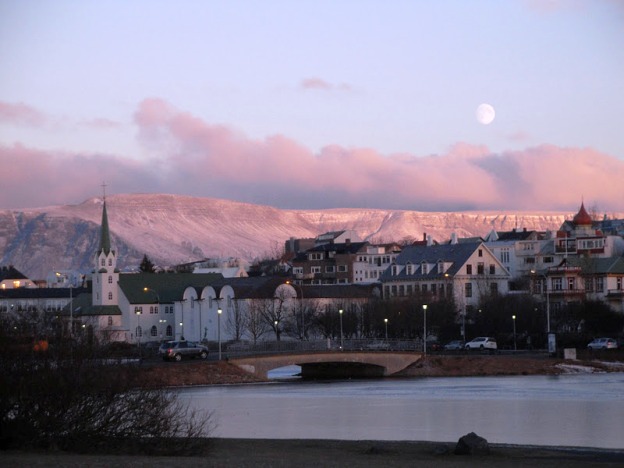If you happen to fly into Reykjavik and the weather is clear, first thing you notice are the out-of-this-world volcanic landscapes with numerous tiny lakes, rivers and – if you look closely – waterfalls. Dozens of active and dormant volcanoes are scattered across the country, and many geyser fields and mud holes give the local landscape absolutely breathtaking views. The capital of Iceland is Reykjavik which could be roughly translated as the Bay of Smoke.

The city is deservedly declared one of the cultural marvels of the world. This is a small and cozy town that sits on a peninsula. Reykjavik has a completely uncharacteristic layout for a capital city and is considered one of the most unusual cities in the world.
Downtown is often called ‘Old Reykjavik’ and it is a vast green space of lawns and lakes, interspersed with traditional houses and old buildings. Here you will find many signs of the early Scandinavian architecture. Among the most interesting old buildings in Reykjavik are the Houses of Parliament and the old Government building.
Located between the harbor and the lake, modern Reykjavik is stretched to the east of the old city.
The most interesting places are the National Gallery of Iceland, the National Museum with its unique historical collections, and the City Art Museum of Reykjavik. Just behind the National Museum there is the Institute of Arni Magnusson, which contains unique ancient books of traditional legends and sagas, as well as extensive collections of historical works. One of the main attractions is the central church of Reykjavik called Hallgrimskirkja. A monument dedicated to the Vikings sits in front of the church. It has a special meaning, as many believe that the vikings discovered America.
Among other attractions we should mention pretty botanical gardens, parks, and several museums of modern art that showcase Icelandic artists. Another interesting fact:
Reykjavik uses geothermal water for heating houses as well as for hundreds of outdoor pools. Also, it is well known that Iceland has the most number of public swimming pools per capita. A massive dormant volcano sits not far from the city and it is a great place for trekking and other outdoor activities. Many square miles of unique deserted lands with relict vegetation and giant glaciers are perfect for days of uninterrupted hiking in perfect solitude.
Just about one hour drive east of Reykjavik, you will encounter a truly unique Valley of Geysers. Geyser fields make Iceland famous and very unique. In general, there are more than 250 clusters of geysers, including some 7 thousand hot springs.
Probably the most famous of all hot springs in Iceland is the Blue Lagoon – a unique geothermal lake, rich in natural salts, where you can swim all year round.
Waterfalls in Iceland are truly spectacular and Skogafoss is among the best. Located in the south, close to the famous Eyjafjallajokull volcano, it is a must stop when you drive on Route 1 around the country.
Iceland is one of the world’s centers of sport fishing and adventure tourism. There are great opportunities for climbing, hiking and safaris with all imaginable types of motor vehicles.
